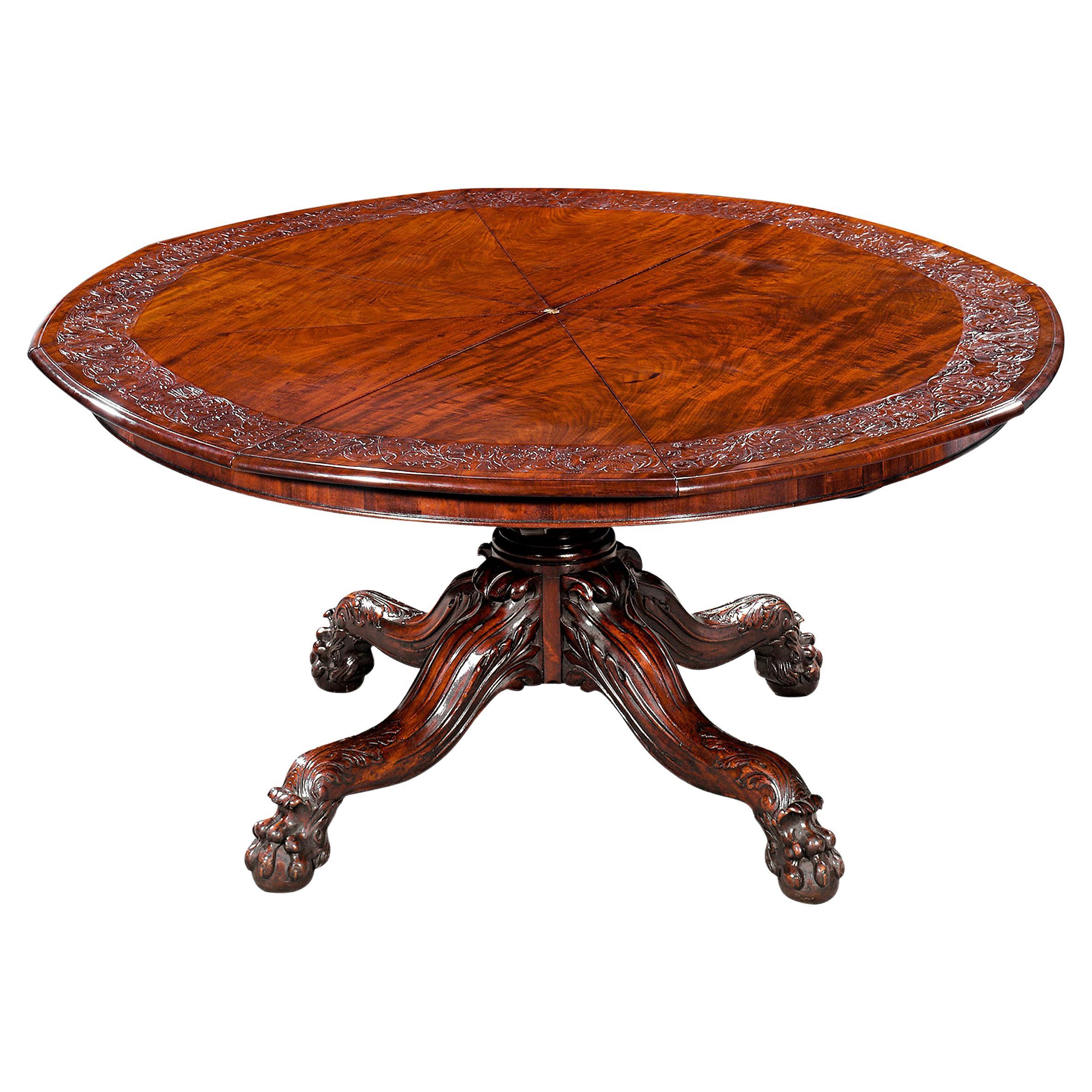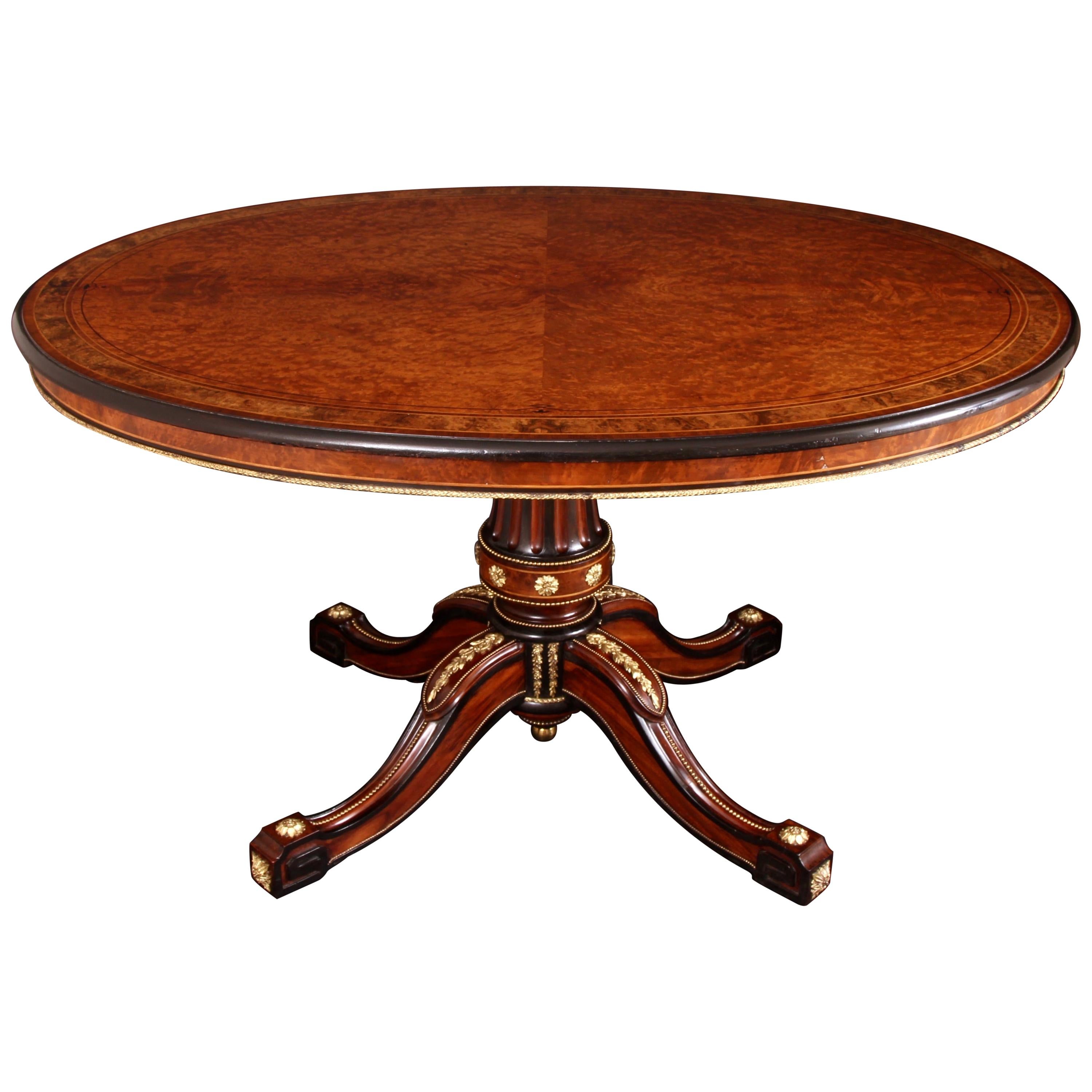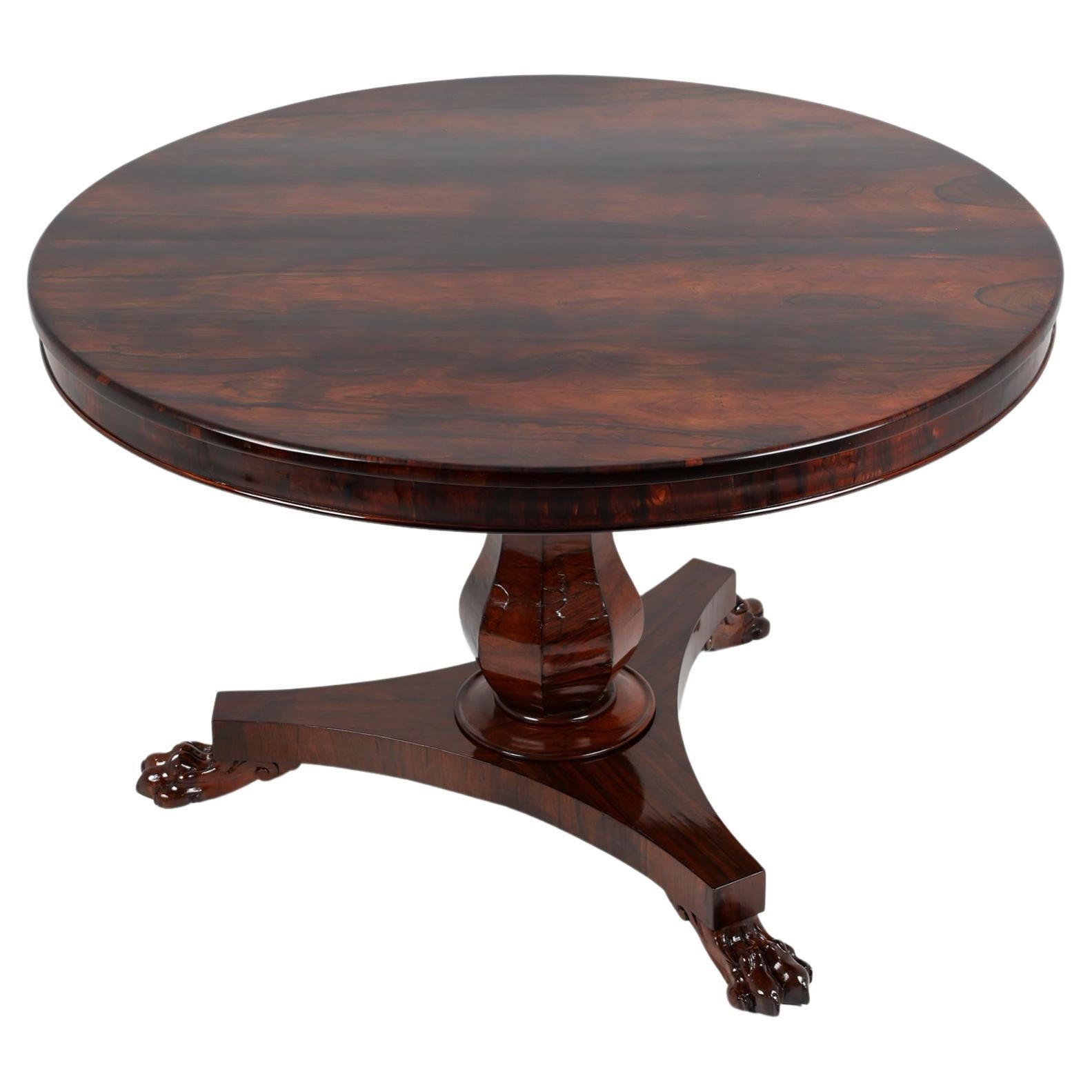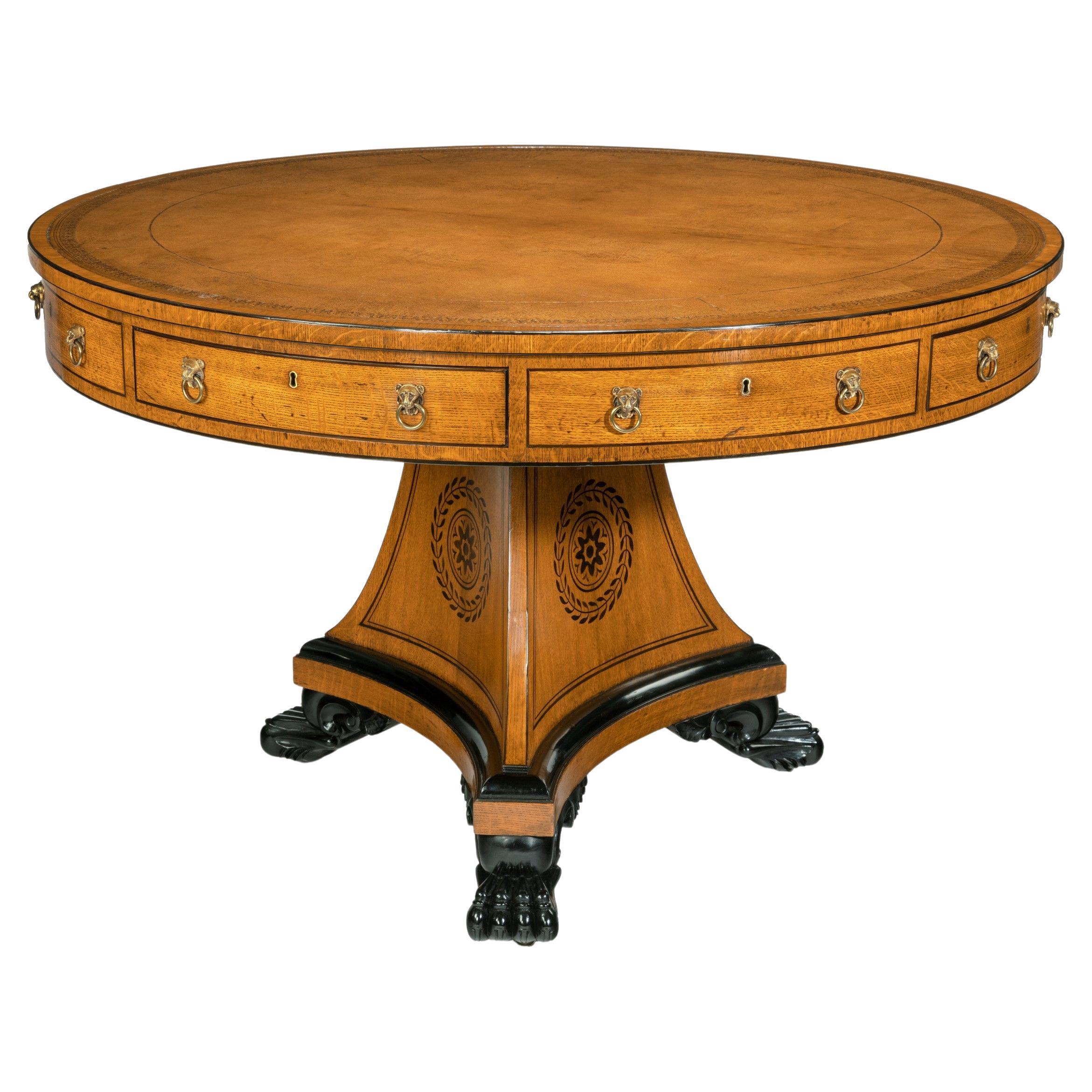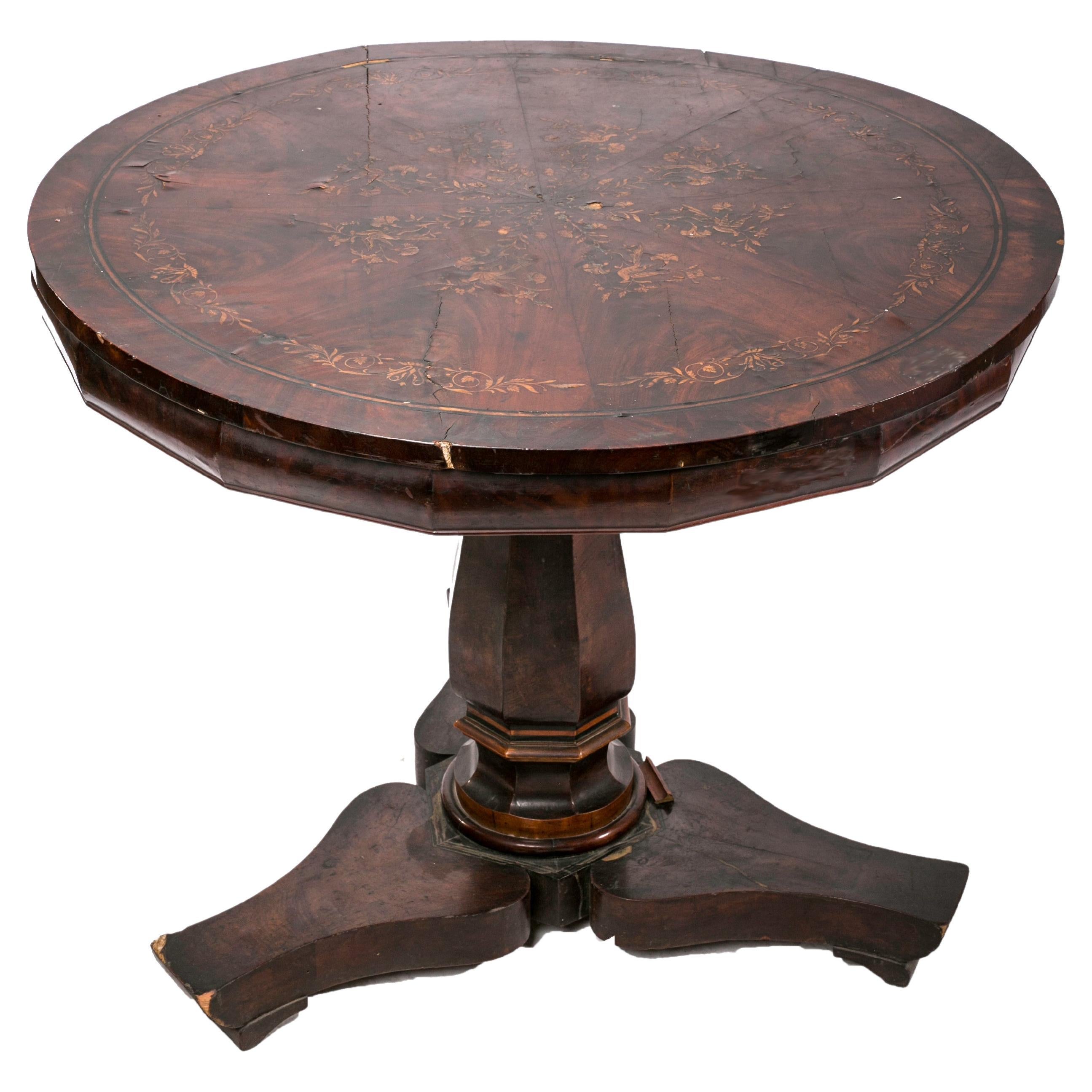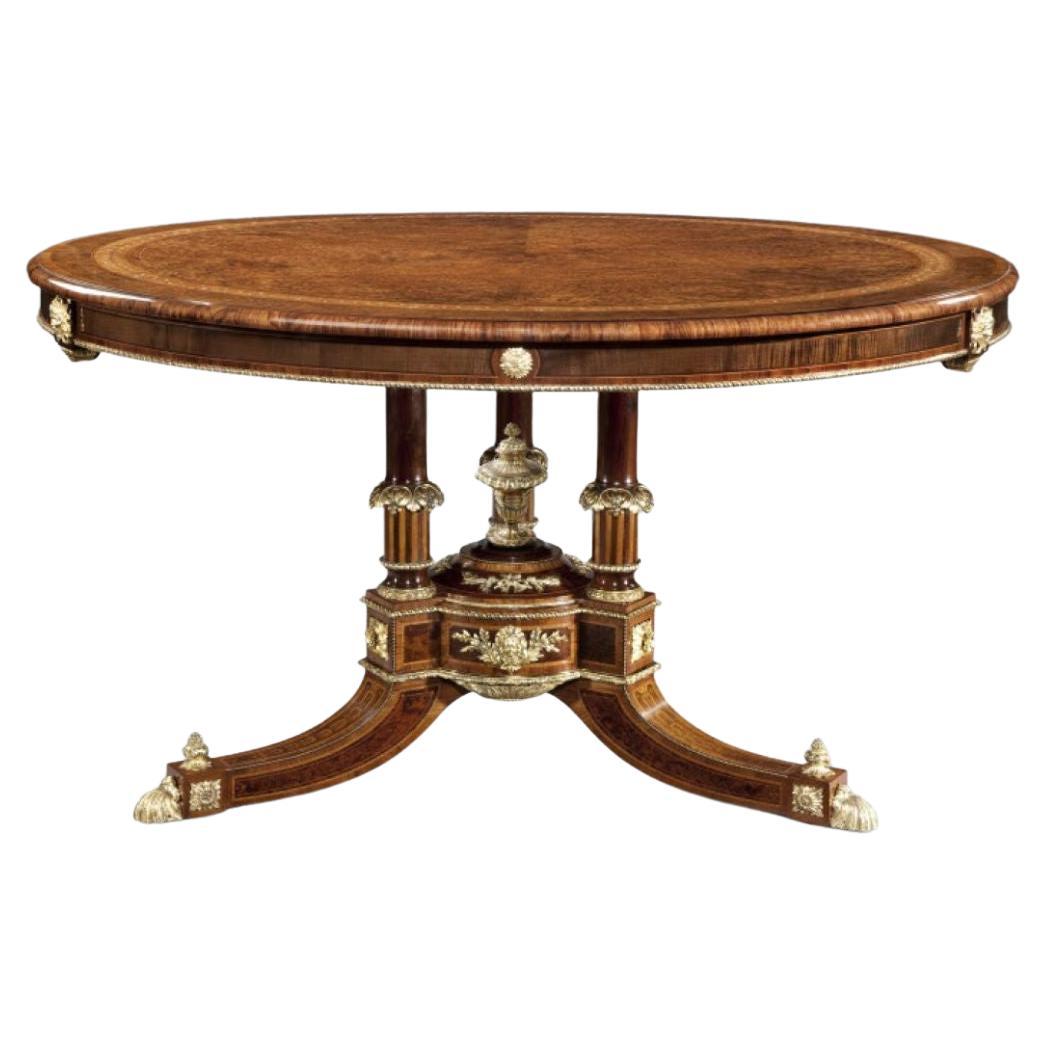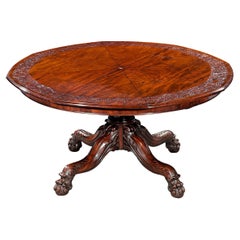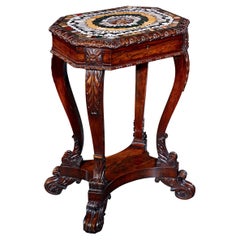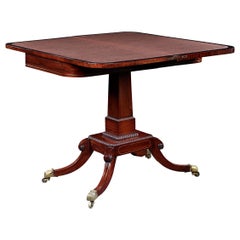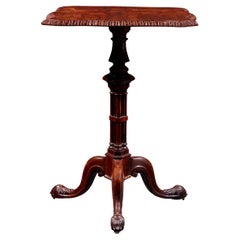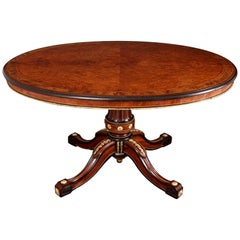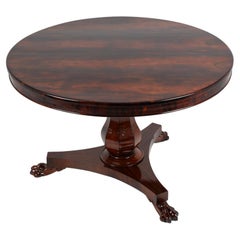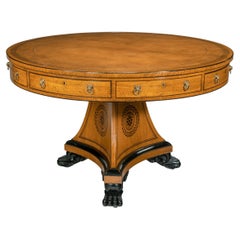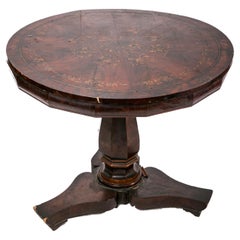Items Similar to 19th Century Exhibition Model of Expanding Table by Samuel Hawkins
Want more images or videos?
Request additional images or videos from the seller
1 of 7
19th Century Exhibition Model of Expanding Table by Samuel Hawkins
$78,500
£58,390.73
€68,364.01
CA$109,534.16
A$122,571.80
CHF 64,001.23
MX$1,506,892.66
NOK 807,449.34
SEK 759,805.85
DKK 510,047.90
Shipping
Retrieving quote...The 1stDibs Promise:
Authenticity Guarantee,
Money-Back Guarantee,
24-Hour Cancellation
About the Item
A masterpiece of both cabinetmaking and mechanical engineering, this one-of-a-kind expanding table was crafted by the renowned cabinetmaker Samuel Hawkins of London for the Great Exhibition of 1851. Diminutive in size, the fascinating table was designed as a model to demonstrate Hawkins’ innovative patent screw movement to visitors of the Exhibition – six million people in total over five months. It was exhibited again a century later at the Victoria & Albert Museum during the Festival of Britain, an event intended “to symbolise two main qualities of the national character: realism and strength on the one hand, and, on the other, independence and imagination” (Catalogue of the Exhibition, 1951, p.117). To this day, the miniature masterpiece demonstrates the quest of English furniture makers to combine technical innovation with superb craftsmanship.
Displaying exceptional ingenuity, Hawkins’ wind-out screw mechanism allowed one to extend the table’s base to accommodate concentric leaves with the simple crank of a handle. It is based on the inventive expanding table originally designed by Robert Jupe in 1835, which used a swivel mechanism to separate sections of the tabletop and allow for segmented leaves to be inserted. Hawkins’ tabletop, on the other hand, extends outwards directly from the center in order to accommodate additional leaves around its diameter. This unique design allowed the mechanism to also smoothly operate on rectangular tables, which could be wound out from the middle to allow for more table space.
Hawkins was not alone in his endeavor to combine the technical merits of engineering and mechanics with the most artful pursuit of cabinetmaking. The first half of the 19th century saw a prolific increase in the popularity of applying new ideas to traditional furniture principles, which allowed furniture to serve many purposes. The resulting “patent” furniture was practical and refined, though few were as innovative as Hawkins’ prodigious design.
Carved with the year of the Exhibition on the beautifully designed pedestal base, the table is a testament to the significance of this innovation. The model is mentioned in detail in the catalog of the Great Exhibition of 1851, the first international exhibition of industry, manufacturing, and science. Held at London’s dazzling Crystal Palace, its visitors were treated to exhibits from around the globe, including feats of engineering, innovations in industry, and marvels of design. Queen Victoria herself was a frequent visitor, along with her husband, Prince Albert, and others including Charlotte Brontë, Lewis Carroll, Charles Darwin, Alfred Tennyson and Charles Dickens.
Pieces such as this that were made specifically for this seminal exhibition are among the most valuable to be found. Before the age of modern advertising, international exhibitions were the sole opportunity for craftsmen and inventors to market their wares to a mass audience. Thus, each piece was masterfully designed and painstakingly crafted down to the smallest detail, in the hopes that it would make a lasting impression on critics and attendees alike. Without question, this expanding table displays the finest craftsmanship and artistry, and is an unparalleled specimen of English ingenuity and original design.
The table's mechanism is illustrated and described in great detail in the official descriptive & illustrated catalogue of the great exhibition of 1851,
circa 1851
Measures: 13” high x 24” diameter.
- Creator:Samuel Hawkins (Cabinetmaker)
- Dimensions:Height: 13 in (33.02 cm)Diameter: 24 in (60.96 cm)
- Style:Other (In the Style Of)
- Materials and Techniques:Mahogany
- Place of Origin:England
- Period:19th Century
- Date of Manufacture:circa 1851
- Condition:
- Seller Location:New Orleans, LA
- Reference Number:Seller: 30-52241stDibs: LU89117337013
About the Seller
5.0
Recognized Seller
These prestigious sellers are industry leaders and represent the highest echelon for item quality and design.
Established in 1912
1stDibs seller since 2010
107 sales on 1stDibs
Typical response time: 4 hours
- ShippingRetrieving quote...Shipping from: New Orleans, LA
- Return Policy
Authenticity Guarantee
In the unlikely event there’s an issue with an item’s authenticity, contact us within 1 year for a full refund. DetailsMoney-Back Guarantee
If your item is not as described, is damaged in transit, or does not arrive, contact us within 7 days for a full refund. Details24-Hour Cancellation
You have a 24-hour grace period in which to reconsider your purchase, with no questions asked.Vetted Professional Sellers
Our world-class sellers must adhere to strict standards for service and quality, maintaining the integrity of our listings.Price-Match Guarantee
If you find that a seller listed the same item for a lower price elsewhere, we’ll match it.Trusted Global Delivery
Our best-in-class carrier network provides specialized shipping options worldwide, including custom delivery.More From This Seller
View AllExpanding Jupe Dining Table by Johnstone and Jeanes
By Robert Jupe
Located in New Orleans, LA
This exceptionally rare circular expanding dining table was designed by Robert Jupe and crafted by the English cabinetmakers Johnstone & Jeanes, successors to Johnstone, Jupe & Co. One of only a handful known from the firm, this table illustrates the Victorian era's quest to combine technical innovation with superb and beautiful craftsmanship. Complete with its original leaves, the table’s circular top is formed from eight separate segments. When the top is rotated, an ingenious swivel mechanism causes the sections to diverge, allowing a set of small or large leaves to be inserted for an adjustable increase in size.
The design for the table was patented by Robert Jupe in 1835, who had envisioned “an improved expanding table so constructed that the sections composing its surface may be caused to diverge from a common center and that the spaces caused thereby may be filled up by inserting leaves or filling pieces.” The first of these fascinating tables were created between 1835 and 1840 during his partnership with John Johnstone and their firm of Johnstone, Jupe & Co. in London. Jupe left the company in 1840, after which the firm changed its name due to a new partnership and became Johnstone & Jeanes. The firm would eventually achieve international fame for its remarkable designs, exhibiting a "circular table made on the expanding principle" like this one at the Great Exhibition of 1851.
Jupe was not alone in his fascination with combining the technical merits of engineering and mechanics with the more artful pursuit of cabinet making. The first half of the 19th century saw a prolific increase in the popularity of applying new ideas to furniture principles, which allowed furniture to serve many purposes. The resulting “patent” furniture...
Category
Antique 19th Century English Victorian Dining Room Tables
Materials
Mahogany
Specimen Table Attributed to William Trotter
By William Trotter
Located in New Orleans, LA
Octagonal Specimen Table
William Trotter
Early 19th Century
This extraordinary early 19th-century Scottish specimen table is a museum-quality masterpiece attributed to William Trott...
Category
Antique Early 19th Century Scottish Regency Side Tables
Materials
Agate
Regency-Era Card Table
Located in New Orleans, LA
This ingenious late Regency card table was designed with both beauty and entertainment in mind. When not in use, its folded D-shaped top sits against the wall providing an elegant si...
Category
Antique Early 19th Century English Regency Game Tables
Materials
Wood
$8,850
Victorian Rosewood Table
Located in New Orleans, LA
Rosewood Table
Circa 1890
This exquisite Victorian table is crafted from luxurious rosewood, a highly prized material known for its rich grain and warm hues. The elegantly carved tr...
Category
Antique 19th Century Victorian End Tables
Materials
Rosewood
$6,850
Regency Library Table
Located in New Orleans, LA
This handsome Regency library desk is crafted of rich mahogany and features the straightforward design prevalent in England during the early 19th ...
Category
Antique Early 19th Century English Regency Desks and Writing Tables
Materials
Leather, Mahogany
$14,500
George III Pembroke Table attributed to Ince & Mayhew
By Ince & Mayhew
Located in New Orleans, LA
This extraordinary George III-period Pembroke table by London cabinetmakers Ince & Mayhew displays the understated sophistication of the late Georgian era. The surface of the table — including both the central panel and the signature Pembroke hinged flaps — is beautifully detailed with satinwood marquetry, inlaid with a fan medallion and foliate motifs executed with the greatest precision and craftsmanship. The table is set upon slender, tapering legs. The design is indicative of the rising influence of and interest in Neoclassical patterns, favoring motifs from nature or Classical antiquity over the extravagance of the Rococo style.
William Ince and John Mayhew joined their skills as furniture designers and cabinetmakers, opening a firm together on Broad Street in 1759. Over the next forty years, the duo would execute many commissions, and develop a volume of engraved designs entitled The Universal System...
Category
Antique 18th Century English Georgian Drop-leaf and Pembroke Tables
Materials
Satinwood
You May Also Like
Exceptional 19th Century Centre Table Attributed to Holland & Sons
By Holland & Sons
Located in London, by appointment only
• One of the finest pieces of 19th century English furniture ever made
• Firmly attributed to the Royal cabinetmaker, Holland & Sons
• Made using stunning rare & exotic timbers, Th...
Category
Antique Mid-19th Century British Early Victorian Center Tables
Materials
Ormolu
19th Century English Wiliam IV Center Table
Located in Stahnsdorf, DE
19th Century English Wiliam IV Center Table
England, 1830
This is an elegant and rare English antique William IV centre / breakfast table, circa 1830 in date.
The table with stunnin...
Category
Antique 1830s English William IV Center Tables
Materials
Rosewood
Important Regency Period Library Table Made After Designs by Thomas Hope
By Thomas Hope
Located in Lymington, Hampshire
An Important Regency Period Library Table Made After Designs by Thomas Hope and Identical to a Pair of Tables at Beechwood Park and Another Potentially From Malahide in Ireland
A Regency oak drum...
Category
Antique 1810s English Regency Center Tables
Materials
Oak
Smith Table, Elegant English Table of 1800
Located in Cesena, FC
Elegant English Smith table, of 1800, entirely veneered in Mahogany and inlaid in maple wood with floral motifs.
Good condition, to be restored.
Measures: diameter cm 100 - H. cm...
Category
Antique Early 1800s English Center Tables
Materials
Wood, Mahogany, Maple
Centre Table Attributed to Holland and Sons Related to a Table in Clarence House
Located in Lymington, Hampshire
A centre table attributed to Holland and Sons related to a table in Clarence House, this exceptional table has a circular top decorated with six radiating amboyna veneers with a border of concentric marquetry rings. The decoration comprising kingwood bands within boxwood stringing, a continuous boxwood laurel wreath with ivory berries on a satinwood ground and further amboyna borders. The frieze has amboyna crossbanding and applied ormolu sunburst medallions. The support is composed of purpleheart columns inlaid with kingwood, terminating in low splayed feet, which encircle a classical urn on a plinth. The superb ormolu mounts include acanthus leaves, classical masks and patera. English, circa 1860.
A table with a similar base and particularly fine ormolu mounts was exhibited by Holland and Sons in the International Exhibition in 1862 and illustrated as plate 40 in J. B. Waring’s book (see pages 100-103 for further references to this exhibition). A further closely related piece was in the collection of the late Queen Elizabeth the Queen Mother and is shown in the Morning Room in Clarence House in the Daily Mail’s article ‘Inside the private world of Prince Charles’, November 2018. Originally founded by Stephen Taprell and William Holland...
Category
Antique 1860s English Center Tables
Materials
Boxwood, Kingwood, Satinwood, Amboyna
Baker Furniture Stately Homes Center Table
By Baker Furniture Company
Located in Countryside, IL
Baker Furniture Stately Homes Center Table
This table measures: 44 wide x 44 deep x 28.25 inches high, with a chair clearance of 25.25 inches
We take our photos in a controlled lig...
Category
Early 2000s American Modern Center Tables
Materials
Wood
